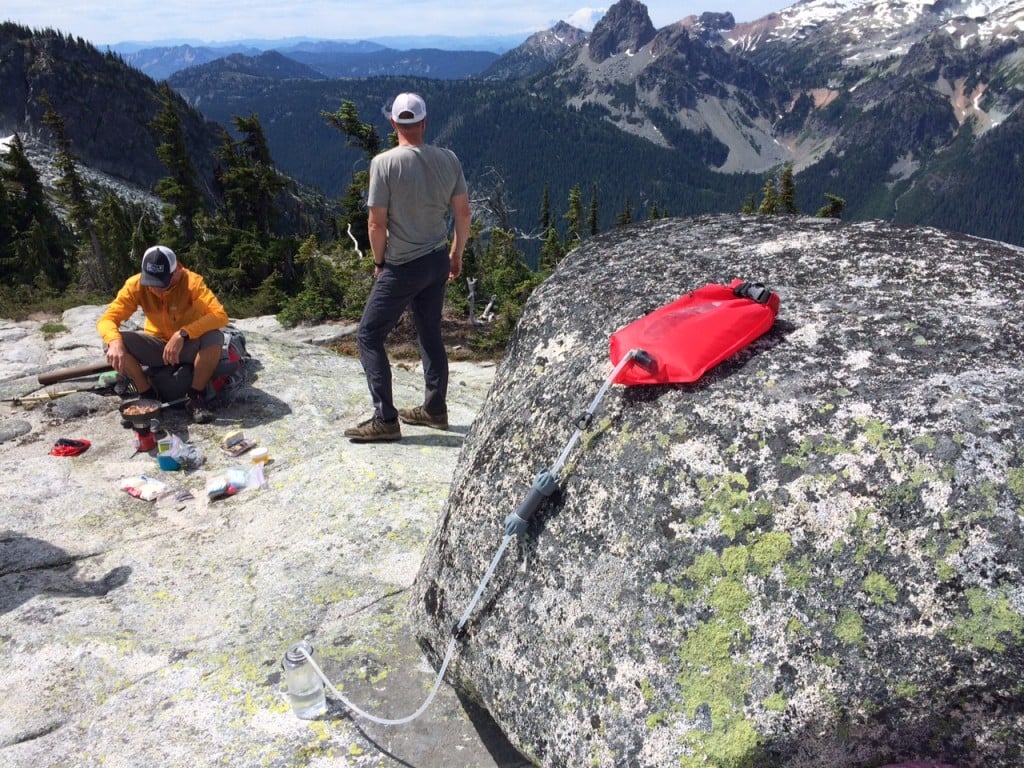Water Filters 101: What the 99.XX% Removal Claims Mean

Purchasing a water treatment device can be tough. From the various technologies available to the numerous claims by manufacturers, it can be hard to understand what you’re even buying—and why. Yet, it’s important to know what your water filter removes and how effectively. To help with this, let’s look at one of the most common claims water filters make and how you can decode it when purchasing a filter for your next adventure.
Water filter claim: “Removes 99.XX% of (particular microbe)”

Perhaps the most common claim on water filter packaging labels is the percentage of microbes (bacteria, protozoa, or viruses) that the product removes from your water. The numbers are always over 99 percent. But if you look closely, they vary after the decimal point. Some products claim to remove 99.9999% of bacteria but only 99.99% of viruses. Why is this? And more importantly, how many 9’s do you really need to be certain your water is considered safe to drink?
First, what the 9’s mean
Just as in standard math, each 9 in the number represents one power of 10, or one “log.” You may have seen some filters claim “log reduction” rates of the microbes instead. The two claims mean the same thing, and they would progress like this:
2 log reduction = 99%
3 log reduction = 99.9%
4 log reduction = 99.99%
5 log reduction = 99.999%
6 log reduction = 99.9999%
Each 9 added to the number means that the filter has removed 10 times more organisms from the water. This would lead us to believe, then, that the higher the number—the more 9’s—the safer the filter, right? To some degree yes, but only up to a certain point. Here’s what you need to know:
The number of 9’s you really need
Each type of microbe has its own standard for the amount of organisms that must be removed. This comes from that microbe’s prevalence in “worst-case water”—that’s what the EPA calls raw sewage. In 1989, EPA scientists found what they believed to be the highest possible concentration of each microbe in sewage water. From there, they worked backward, determining how many organisms needed to be removed from these worst-case conditions in order to create safe drinking water—or essentially “zero” presence. Taking a conservative stance in order to ensure protection of the user, they set those numbers as the standard for all water sources, even those less threatening.
It’s for this reason that the number of 9’s differs after the decimal point depending on the class of microbe. Below are the standards that the EPA has set for each microbe class. These are the percentages that reduce those worst-case scenarios down to essentially “zero” presence. And they’re the numbers you should be looking for on a filter’s package:
99.9999% of Bacteria
99.9% of Protozoa (cysts)
99.99% of Viruses
These standards are the law for municipalities in the U.S. that deliver public drinking water. The NSF, which sets volunteer testing protocols for backcountry filter manufacturers, has since adopted them. If a water filter company, like MSR, wants to ensure that its products deliver scientifically safe drinking water, it should test those products to these strict NSF standards and prove that they meet them.
Claims to be leery of
However, even conducting the proper testing can be tough, not to mention meeting the standards, and because of this you need to be leery of certain types of creative claims.
Watch out for claims that use misleading language like: “Removes up to 99.9999% of bacteria.” Also, be sure to carefully count the number of 9’s that corresponds with each class of microbe to ensure that it’s what the EPA dictates.
Finally, remember that just because a product may have more 9’s than the EPA standard, it doesn’t mean that product is any safer in the EPA’s mind. It’s just a clever tactic to make the product look better.
The market for water treatment devices is unregulated so companies are free to make claims that they aren’t required to prove. Be sure to do your own research and find a product you trust. A good water treatment device can mean the difference between a spoiled trip, and one that’s successfully fueled by refreshing (and well-treated) mountain spring water.
